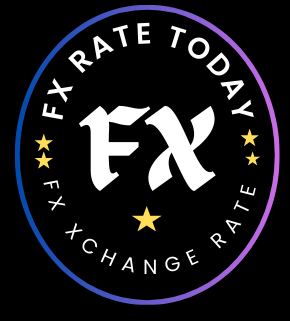Cryptocurrency Software Classification: Types, Features & Use Cases (2025 Guide)

A Comprehensive Guide to Cryptocurrency Software Classification
The world of cryptocurrency is powered by a diverse and rapidly evolving ecosystem of software. From the digital wallets in our pockets to the complex platforms that run entire financial systems, understanding the different types of cryptocurrency software is crucial for anyone looking to navigate this dynamic space. This article provides a detailed classification of cryptocurrency software, helping you understand its various forms and functions.
1. Core Infrastructure: The Bedrock of Crypto
At the most fundamental level, there’s the software that forms the very foundation of the crypto world.
-
Blockchain Platforms: Often referred to as Layer 1 protocols, these are the underlying networks on which cryptocurrencies and decentralized applications are built. They are essentially the operating systems of the crypto world. Think of them as the foundation upon which everything else is constructed. Key features include:
-
Decentralization: Control is distributed across a network of computers, eliminating a single point of failure.
-
Security: Cryptography is used to secure transactions and make the data immutable.
-
Transparency: All transactions are typically recorded on a public ledger, allowing for accountability.
-
Examples: Bitcoin, the original cryptocurrency and blockchain, is a prime example. Ethereum is another major platform known for its smart contract capabilities, which allow developers to build decentralized applications (dApps). Other notable platforms include Stellar, known for its fast and low-cost cross-border payments, and Hyperledger Fabric, which is popular for enterprise-level, private blockchain solutions.
-
-
Mining Software: This specialized software is used to create new cryptocurrency coins and to verify and add new transactions to the blockchain. Miners use this software to solve complex computational puzzles, and in return for their efforts, they are rewarded with new coins.
2. Access and Management: Your Gateway to Crypto
This category of software provides users with the tools to interact with the crypto world.
-
Cryptocurrency Wallets: These are essential tools for managing your digital assets. They don’t actually store your currency but rather the cryptographic keys that give you access to your funds on the blockchain. Wallets can be broadly classified into two main types:
-
Software Wallets (Hot Wallets): These are applications that run on your computer or mobile device. They are connected to the internet, making them convenient for frequent transactions. Examples include desktop wallets, mobile wallets, and web-based wallets that often come as browser extensions. While user-friendly, their online nature makes them more vulnerable to hacking.
-
Hardware Wallets (Cold Wallets): These are physical devices, similar to a USB drive, that store your private keys offline. This “cold storage” provides the highest level of security as your keys are not exposed to the internet.
-
-
Custodial vs. Non-Custodial Wallets: Another crucial distinction is who controls your private keys.
-
Custodial Wallets: In this case, a third party, such as a cryptocurrency exchange, holds your private keys for you. This can be convenient for beginners, but it means you are trusting the security of your funds to that third party.
-
Non-Custodial Wallets: With these wallets, you have sole control over your private keys. This gives you complete ownership of your assets, but also means you are fully responsible for their security.
-
3. Applications and Services: The User-Facing Layer
This is where the majority of users interact with the crypto ecosystem.
-
Decentralized Applications (dApps): These are applications that run on a peer-to-peer network of computers rather than a single, central server. This makes them resistant to censorship and control by a single entity. DApps are built on smart contracts, which are self-executing contracts with the terms of the agreement written directly into the code. They have a wide range of uses, including:
-
Decentralized Finance (DeFi): This is a major category of dApps that aims to recreate traditional financial services, such as lending, borrowing, and trading, in a decentralized manner.
-
Gaming and NFTs: Blockchain-based games and non-fungible tokens (NFTs) are a rapidly growing area, allowing for true ownership of in-game assets.
-
Social Media: Decentralized social media platforms aim to give users more control over their data and content.
-
-
Cryptocurrency Exchanges: These are online platforms where you can buy, sell, and trade cryptocurrencies. They are a vital part of the crypto ecosystem, providing liquidity and making it easy for people to enter the market.
-
Blockchain Explorers: These are tools that allow you to view and interact with the data on a blockchain. You can use them to look up transactions, check the balance of a wallet, and get other information about the network.
Conclusion
The world of cryptocurrency software is vast and multifaceted. From the foundational blockchain platforms that provide the underlying infrastructure to the user-friendly wallets and dApps that we interact with daily, each category plays a vital role in the functioning of the crypto ecosystem. As the technology continues to mature, we can expect to see even more innovative and specialized software emerge, further expanding the possibilities of what can be achieved with decentralized technologies. Understanding these different classifications is the first step for anyone looking to confidently and safely participate in this exciting and ever-evolving field.
Frequently Asked Questions (FAQs)
What is the most basic type of cryptocurrency software?
The most fundamental type of cryptocurrency software is the blockchain platform itself, such as Bitcoin or Ethereum. These platforms provide the core infrastructure and rules for the entire network.
What is the difference between a hot wallet and a cold wallet?
A hot wallet is a software-based wallet that is connected to the internet, making it convenient for transactions but more vulnerable to online threats. A cold wallet is a hardware device that stores your private keys offline, offering a higher level of security.
What are dApps?
dApps, or decentralized applications, are software programs that run on a peer-to-peer network, like a blockchain, instead of a central server. This makes them more transparent, secure, and resistant to censorship.
What is the difference between custodial and non-custodial wallets?
With a custodial wallet, a third party, like an exchange, holds your private keys for you. In a non-custodial wallet, you have full control and responsibility for your private keys.
What is DeFi?
DeFi stands for Decentralized Finance and refers to financial services that are built on blockchain technology. These applications aim to provide traditional financial services, such as lending and trading, in a more open and accessible way.
